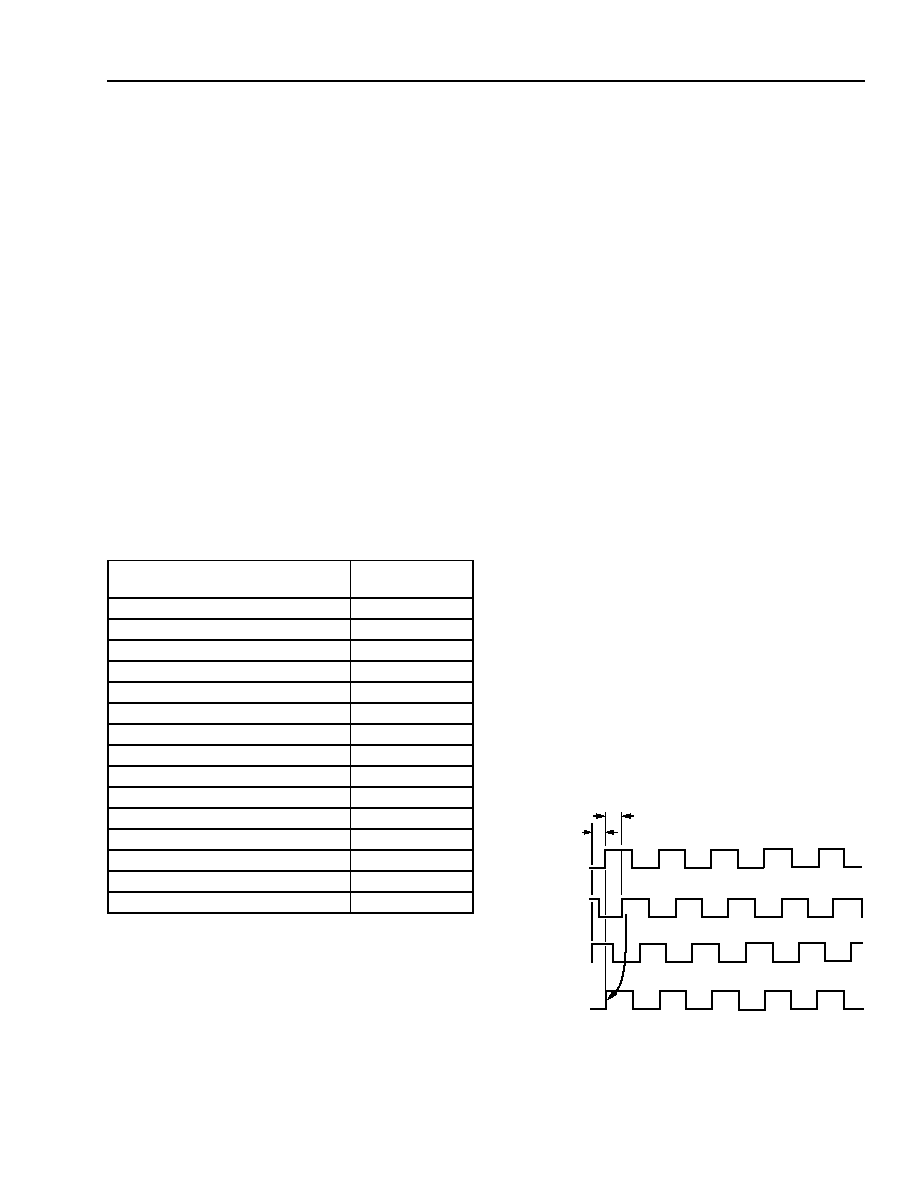- 您現(xiàn)在的位置:買賣IC網(wǎng) > PDF目錄299576 > OR3T165-4B432 FPGA, 1024 CLBS, 120000 GATES, PBGA432 PDF資料下載
參數(shù)資料
| 型號(hào): | OR3T165-4B432 |
| 元件分類: | FPGA |
| 英文描述: | FPGA, 1024 CLBS, 120000 GATES, PBGA432 |
| 封裝: | BGA-432 |
| 文件頁(yè)數(shù): | 182/210頁(yè) |
| 文件大?。?/td> | 2138K |
| 代理商: | OR3T165-4B432 |
第1頁(yè)第2頁(yè)第3頁(yè)第4頁(yè)第5頁(yè)第6頁(yè)第7頁(yè)第8頁(yè)第9頁(yè)第10頁(yè)第11頁(yè)第12頁(yè)第13頁(yè)第14頁(yè)第15頁(yè)第16頁(yè)第17頁(yè)第18頁(yè)第19頁(yè)第20頁(yè)第21頁(yè)第22頁(yè)第23頁(yè)第24頁(yè)第25頁(yè)第26頁(yè)第27頁(yè)第28頁(yè)第29頁(yè)第30頁(yè)第31頁(yè)第32頁(yè)第33頁(yè)第34頁(yè)第35頁(yè)第36頁(yè)第37頁(yè)第38頁(yè)第39頁(yè)第40頁(yè)第41頁(yè)第42頁(yè)第43頁(yè)第44頁(yè)第45頁(yè)第46頁(yè)第47頁(yè)第48頁(yè)第49頁(yè)第50頁(yè)第51頁(yè)第52頁(yè)第53頁(yè)第54頁(yè)第55頁(yè)第56頁(yè)第57頁(yè)第58頁(yè)第59頁(yè)第60頁(yè)第61頁(yè)第62頁(yè)第63頁(yè)第64頁(yè)第65頁(yè)第66頁(yè)第67頁(yè)第68頁(yè)第69頁(yè)第70頁(yè)第71頁(yè)第72頁(yè)第73頁(yè)第74頁(yè)第75頁(yè)第76頁(yè)第77頁(yè)第78頁(yè)第79頁(yè)第80頁(yè)第81頁(yè)第82頁(yè)第83頁(yè)第84頁(yè)第85頁(yè)第86頁(yè)第87頁(yè)第88頁(yè)第89頁(yè)第90頁(yè)第91頁(yè)第92頁(yè)第93頁(yè)第94頁(yè)第95頁(yè)第96頁(yè)第97頁(yè)第98頁(yè)第99頁(yè)第100頁(yè)第101頁(yè)第102頁(yè)第103頁(yè)第104頁(yè)第105頁(yè)第106頁(yè)第107頁(yè)第108頁(yè)第109頁(yè)第110頁(yè)第111頁(yè)第112頁(yè)第113頁(yè)第114頁(yè)第115頁(yè)第116頁(yè)第117頁(yè)第118頁(yè)第119頁(yè)第120頁(yè)第121頁(yè)第122頁(yè)第123頁(yè)第124頁(yè)第125頁(yè)第126頁(yè)第127頁(yè)第128頁(yè)第129頁(yè)第130頁(yè)第131頁(yè)第132頁(yè)第133頁(yè)第134頁(yè)第135頁(yè)第136頁(yè)第137頁(yè)第138頁(yè)第139頁(yè)第140頁(yè)第141頁(yè)第142頁(yè)第143頁(yè)第144頁(yè)第145頁(yè)第146頁(yè)第147頁(yè)第148頁(yè)第149頁(yè)第150頁(yè)第151頁(yè)第152頁(yè)第153頁(yè)第154頁(yè)第155頁(yè)第156頁(yè)第157頁(yè)第158頁(yè)第159頁(yè)第160頁(yè)第161頁(yè)第162頁(yè)第163頁(yè)第164頁(yè)第165頁(yè)第166頁(yè)第167頁(yè)第168頁(yè)第169頁(yè)第170頁(yè)第171頁(yè)第172頁(yè)第173頁(yè)第174頁(yè)第175頁(yè)第176頁(yè)第177頁(yè)第178頁(yè)第179頁(yè)第180頁(yè)第181頁(yè)當(dāng)前第182頁(yè)第183頁(yè)第184頁(yè)第185頁(yè)第186頁(yè)第187頁(yè)第188頁(yè)第189頁(yè)第190頁(yè)第191頁(yè)第192頁(yè)第193頁(yè)第194頁(yè)第195頁(yè)第196頁(yè)第197頁(yè)第198頁(yè)第199頁(yè)第200頁(yè)第201頁(yè)第202頁(yè)第203頁(yè)第204頁(yè)第205頁(yè)第206頁(yè)第207頁(yè)第208頁(yè)第209頁(yè)第210頁(yè)

Lucent Technologies Inc.
73
Preliminary Data Sheet, Rev. 1
September 1998
ORCA Series 3 FPGAs
Programmable Clock Manager (PCM):
Advance Information (continued)
2x Clock Duty-Cycle Adjustment
A doubled-frequency, duty-cycle adjusted version of
the input clock can be constructed in DLL mode. The
first clock cycle of the 2x clock output occurs when the
input clock is high, and the second cycle occurs when
the input clock is low. The duty cycle can be adjusted in
1/32 (6.25%) increments of the input clock period.
Additionally, each of the two doubled-clock cycles that
occurs in a single input clock cycle may be adjusted to
have different duty cycles. DLL 2x clock mode is
selected by setting bit 4 of register five to a 0, and by
setting register six, bits [5:4] to 01 for ExpressCLK out-
put, and/or bits [7:6] to 01 for system clock output. The
duty-cycle percentage value is entered in register
three. See register three programming details for more
information. Duty-cycle values where both cycles of the
doubled clock have the same duty cycle are also
shown in Table 28.
Phase-Locked Loop (PLL) Mode
The PLL mode of the PCM is used for clock multiplica-
tion and clock delay minimization functions. PLL func-
tions make use of the PCM dividers and use feedback
signals, often from the FPGA array. The use of feed-
back is discussed with each PLL submode. PLL mode
is selected by setting bit 0 of register five to 1.
Clock Delay Minimization
PLL mode can be used to minimize the effects of the
input buffer and input routing delay on the clock signal.
PLL mode causes the feedback clock to align in phase
with the input clock (refer back to the block diagram in
Figure 45) so that the delay between the input clock
and a clock that is fed back to the PCM is effectively
eliminated.
There is a dedicated feedback path from an adjacent
middle CLKCNTRL block to the PCM. Using the corner
ExpressCLK
pad as the input to the PCM and using this
dedicated feedback path, the clock from the Express-
CLK
output of the PCM, as viewed at the CLKCNTRL
block, will be phase-aligned with the ExpressCLK input
to the PCM. These relationships are diagrammed in
A feedback clock can also be input to the PCM from
general routing. This allows for compensating for delay
between the PCM input and a point in the general rout-
ing. The use of this routed-feedback path is not gener-
ally recommended. Because compensation is based
on the programmable routing, the amount of clock
delay compensation can vary between FPGA lots and
fabrication processes, and will vary each time that the
feedback line is routed using different resources. Con-
tact Lucent Technologies for application notes regard-
ing the use of routed-feedback delay compensation.
Figure 47. ExpressCLK Delay Minimization
Using the PCM
Table 28. DLL Mode Delay/2x Duty Cycle
Programming Values
Register 3 [7:0]
7 6 5 4 3 2 1 0
Duty Cycle
(%)
0 0 0 0 0 0 0 0
6.25
0 0 0 0 1 0 0 1
12.50
0 0 0 1 0 0 1 0
18.75
0 0 0 1 1 0 1 1
25.00
0 0 1 0 0 1 0 0
31.25
0 0 1 0 1 1 0 1
37.50
0 0 1 1 0 1 1 0
43.75
0 0 1 1 1 1 1 1
50.00
1 1 0 0 0 0 0 0
56.25
1 1 0 0 1 0 0 1
62.50
1 1 0 1 0 0 1 0
68.75
1 1 0 1 1 0 1 1
75.00
1 1 1 0 0 1 0 0
81.25
1 1 1 0 1 1 0 1
87.50
1 1 1 1 0 1 1 0
93.75
5-5980(F)
CORNER
ExpressCLK AT
CLKCNTRL
DELAY
DELAY IS COMPENSATED
AT PCM INPUT
OUTPUT OF PCM
OUTPUT WITHOUT
USING PCM
OUTPUT
ExpressCLK
USING PCM
ExpressCLK
COMPENSATION EQUALS DELAY
相關(guān)PDF資料 |
PDF描述 |
|---|---|
| OR3T165-4B600 | FPGA, 1024 CLBS, 120000 GATES, PBGA600 |
| OR3T165-4BA352I | FPGA, 1024 CLBS, 120000 GATES, PBGA352 |
| OR3T165-4BA352 | FPGA, 1024 CLBS, 120000 GATES, PBGA352 |
| OR3T165-4BC432I | FPGA, 1024 CLBS, 120000 GATES, PBGA432 |
| OR3T165-4BC600I | FPGA, 1024 CLBS, 120000 GATES, PBGA600 |
相關(guān)代理商/技術(shù)參數(shù) |
參數(shù)描述 |
|---|---|
| OR3T20 | 制造商:AGERE 制造商全稱:AGERE 功能描述:3C and 3T Field-Programmable Gate Arrays |
| OR3T20-4BA256I | 制造商:未知廠家 制造商全稱:未知廠家 功能描述:Field Programmable Gate Array (FPGA) |
| OR3T20-4S208I | 制造商:未知廠家 制造商全稱:未知廠家 功能描述:Field Programmable Gate Array (FPGA) |
| OR3T20-4S240I | 制造商:未知廠家 制造商全稱:未知廠家 功能描述:Field Programmable Gate Array (FPGA) |
| OR3T20-5BA256 | 制造商:AGERE 制造商全稱:AGERE 功能描述:3C and 3T Field-Programmable Gate Arrays |
發(fā)布緊急采購(gòu),3分鐘左右您將得到回復(fù)。